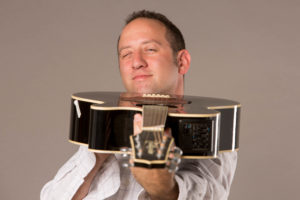

Kerry started thinking about the idea of using music as a means of making people happy, while also helping them with certain essential tasks or goals, i.e. getting to school in the morning, etc. He thought of other ideas and lessons, too, that were commonly practiced, and he began to think of songs as concepts – employing phrases and language that were part of the everyday vernacular of this world.
As he researched other musical expressions available for the Special Needs community, it appeared they were mainly patronizing and not quite mature enough, as if only intended for very young people, or worse, as if the age of this particular audience was irrelevant or not even acknowledged. This caused Kerry to focus on music that was more appropriate for all ages, as he saw that people with disabilities also enjoyed rock, rap, pop, folk, reggae and indeed all other genres.
His vision and goal was to create music to entertain, to enrich and to assist, in any way possible, in the lives of those with or without developmental disabilities. Kerry also hoped the songs would make the listener sing and dance, and with this model he planned to make an album whose theme would fit this niche, as he determined there wasn’t anything else in the market quite like that.
After a few years, he’d finally written a couple of songs, made a demo and started playing them with his students. He was overjoyed at the response – they loved it! Kerry felt he had finally made a musical connection with this audience, and an artistic breakthrough.
The best part was that the music itself was more age appropriate for these young adults than most music aimed at people with Special Needs. Music made specifically for an individual of any age with a developmental disability tended to be characteristically juvenile. That is, it was usually inappropriate for a twenty-‐year-‐old to listen to patronizing tunes about counting to three, for example, even if this twenty-‐year-‐old is developmentally much younger than his/her age.